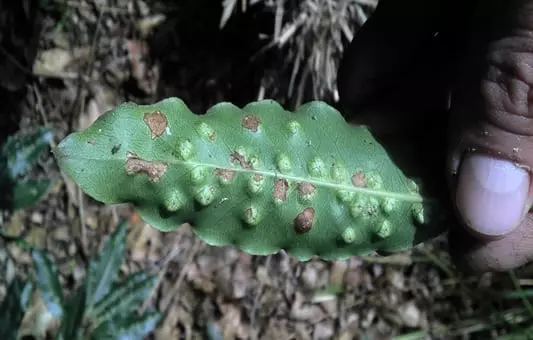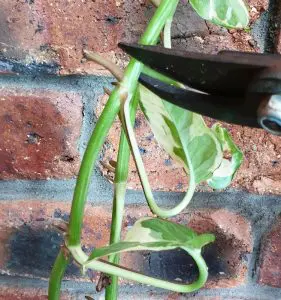Pest Collection – Pittosporum leafminer
Common Name: Pittosporum leafminer (lumps on leaves)
Scientific Name: Phytobia pittosporphyllii
Order: Diptera
Host plant where this example was found: Native Daphne (Pittsporum undulatum
Host range or situation where pest is usually found: Pittosporum spp. Predominantly P.undulatum/native lily pily

Damaging stage (s): Female flies lays eggs below the epidermis on leaf upper surface. The oviposition punctures are mainly on either side of midrib of leave. Holes where the eggs are laid is surrounded by a violet-brown area. Maggots hatch from the eggs and feed in the mines which become gall like. When maggots are fully grown, they pupate within the gall and the adult fly emerges from a large hole on the under surface of the gall.
Direct feeding damage: Discoloured circular sunken areas caused by larva feeding. (Galls)
Indirect damage: Unsightly foliage. Larva feeding might introduce decay organisms e.g. bacteria, fungi.
Method of feeding: Adult – sucking. Feed on liquids. Larva – responsible for most damage, they also suck liquids.
Life cycle: Complete metamorphosis – eggs, larva, pupa and adult fly.
Spread: Adults flying. Movement of infested plant material
Conditions favouring: Temperate and sub-tropical climates, coastal areas of NSW.
Distinguishing features for identification: Flies – small, 3mm long. One pair of membranous forewings, hindwings small club like structures. Large compound eyes. Mouth used for sucking up liquid. Larva – no true legs, (maggot) very reduced head capsule.
Control options available for this situation: None. Plant is tolerating infestation and is well away from walkway. The perfumed flowers can be enjoyed without sighting of leave galls.
Other control methods: If you don't care much for organic control or if the plant is an ornamental you can spray with an insecticide – these can be pretty effective contrary to other information on the web and the damage caused by the flies/maggots will grow out over several weeks.
Identification reference (including page no): Plant protection 3, p K112; Plant protection 1, p 65-77
The above information was kindly donated by Werner (Horticulturalist)













